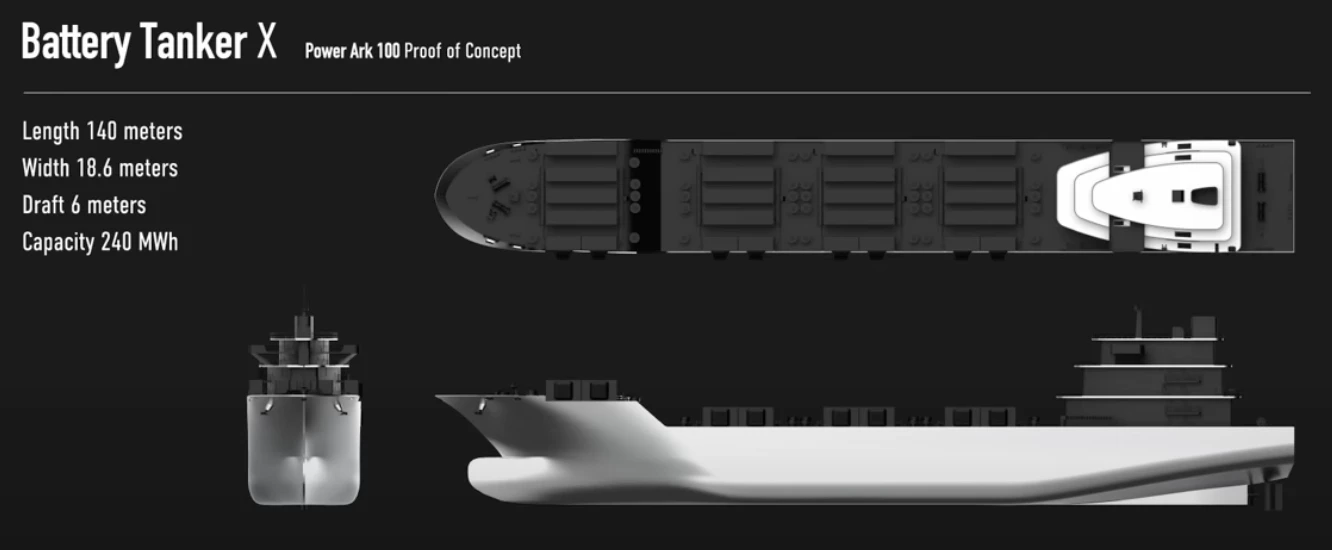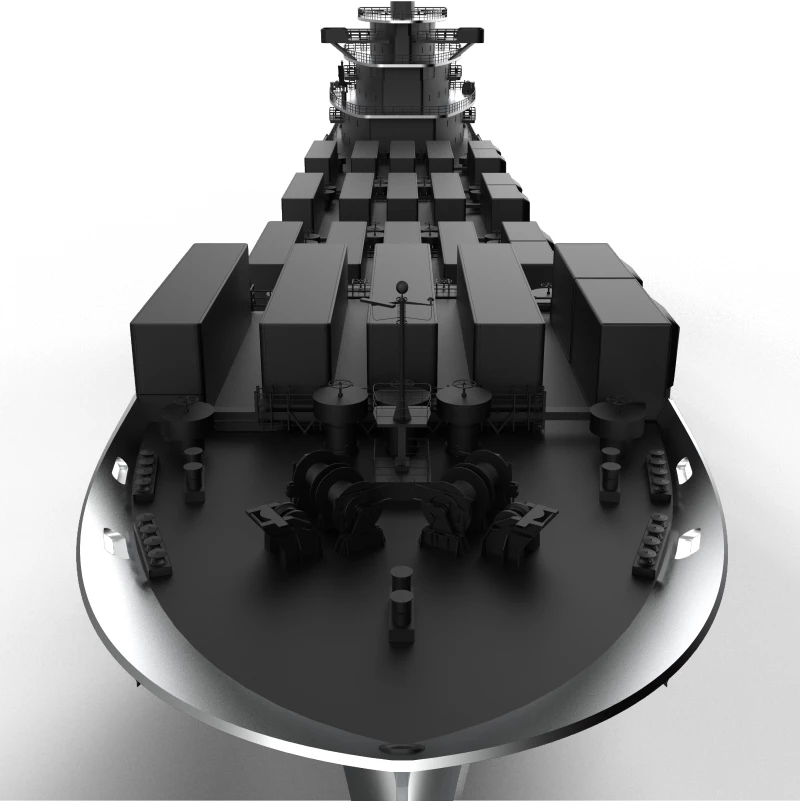Japanese company PowerX is moving ahead with its strange plan to build a "mobile power station" in the form of a 140-meter (460-ft) electric "battery tanker," which will carry 241 megawatt-hours of renewable energy across the sea over short distances.
The idea here is simple enough: renewable energy is often generated a fair distance from where it's most needed, so let's build an electric ship full of batteries, and jolly well ship it there.
Why not just put down an underwater cable? That's a fine question. PowerX points out that Japan is surrounded by deep seas, and prone to earthquakes, and says in a press release that "the ship-based solution resolves issues such as long downtime from undersea cable malfunctions and repairs, as well as the high costs associated with ultra-high voltage connections and substations."

To a man with a hammer, they say, everything looks like a nail. PowerX has a couple of battery factories, which might explain why the company thinks it's a good idea to build a ship loaded with nothing but batteries. Ninety-six container-sized lithium-iron phosphate battery modules will be spaced around this relatively small demonstrator, as well as controllers and charge units.
Currently named "Battery Tanker X," the prototype won't be going very far. Pushing a vessel through draggy water is a nightmare for battery-powered electric propulsion systems, so the ship's maximum range before it burns through too much battery to make the trip economically feasible is slated at just 300 km (186 miles).
A full production "Power Ark" the same size, says PowerX, might move about 4,190 GWh of electricity annually from renewable sources in Hokkaido to meet demand in Aomori just 100 km (62 miles) away, making use of transmission infrastructure already in place but soon to be abandoned as fossil fuel-based generation capacity is gradually shut down.

If four ships were deployed around the clock on this route, the company says the cost of power transport would be around US$0.17 per kWh. It doesn't go out of its way to mention that the average retail price of household electricity in Japan is around US$0.25, leaving a scant US$0.07 per kWh to be divided between the renewable power, distribution and retail companies.
The ships will be fitted with gas emission control and fire suppression mechanisms, although the lithium-iron phosphate chemistry is intrinsically quite stable and difficult to ignite. The full-size Power Ark will be much larger than this prototype, and it's proposing to carry eight times as much loaded lithium, meaning it'll hit the high seas carrying a colossal two gigawatt-hours of trapped energy – enough to run about 70,000 average US homes for a full day.
We find this idea somewhat environmentally confusing; assuming these ships are built without carbon-neutral green steel, one wonders how much clean energy they need to cart around, burning clean energy every step of the way, before they can be considered an environmental win.
Still, PowerX must see a business case here, and it's establishing a new subsidiary called "Ocean Power Grid, Inc" to commercialize the technology. With a detailed prototype design now complete, the company aims to have the Battery Tanker X built in 2025 , with "domestic and international field testing planned to commence in 2026." Currently funded to the tune of more than US$70 million, PowerX is setting up a number of partnerships around the idea.
Check out a video below.
Source: PowerX
Editor's note: this piece was amended Thursday June 1, to reflect the fact that these ships use a lower-density, safer chemistry that's unlikely to cause huge battery fires.






